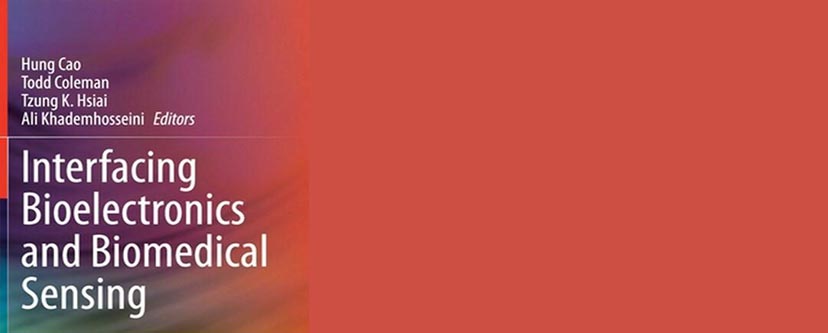July 20, 2020
From the burgeoning field of biomedical engineering and the ever-present need to provide solutions for medical problems, a new resource has been created that joins engineering technologies with biological research and medicine. A comprehensive new book entitled “Interfacing Bioelectronics and Biomedical Sensing,” and co-edited by Ali Khademhosseini of the Terasaki Institute for Biomedical Engineering, Hung Cao of UC Irvine, Todd Coleman of UC San Diego and Tzung Hsiai from UCLA, has been recently published by Springer Nature.
Encompassing a broad range of leading topics, and with contributions from a field of experts, the book offers a wealth of information expressly written for biomedical engineers and researchers. The book is divided into nine chapters, each of which contains both basic and advanced information on such technologies as electronic image enhancement techniques, wireless medical implants, and dissolvable bioelectronics. These technologies can be utilized for a variety of medical purposes, including enhanced detection of atherosclerosis, lower-risk cardiac pacemakers, retinal implants that restore vision and electronic drug delivery devices that dissolve harmlessly into the body after use.
The chapter from Khademhosseini’s group discusses minimally invasive biosensors and the most recent improvements in flexible electronics, biotechnology, and wireless communication that make it possible to produce these biosensors for commercial use. It also delves into the principles, emerging technologies, applications, and challenges involved in their development. Further efforts in this field can enhance the ability of minimally invasive biosensors to enable personalized healthcare and precision medicine.

